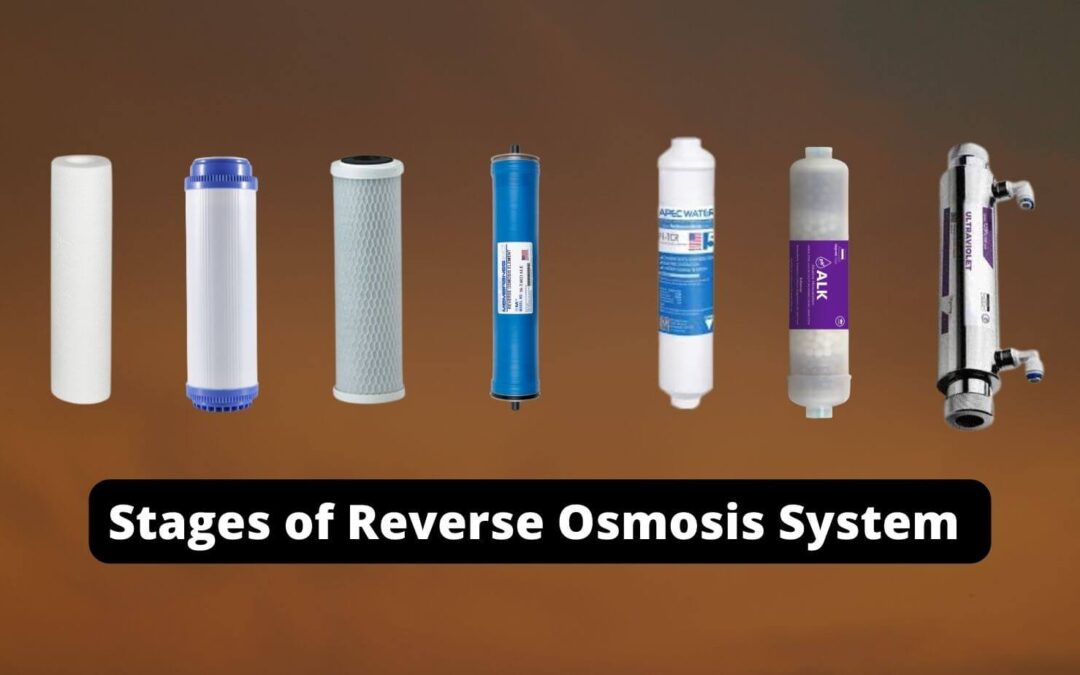What is Reverse Osmosis Filtration?
Reverse osmosis (RO) is a water purification process that can reduce the water’s 95% to 99% contamination. A RO system uses a semi-permeable membrane to remove contaminants and sediments from water, such as lead, arsenic, chlorine, etc.
How does Reverse Osmosis Filtration work?
The reverse osmosis water filtration system is a widely known water purification process in the developed world. Even after boiling water, many harmful substances remain unhealthy for our human body. But in the reverse osmosis system, water is completely purified without any heat generation. After filtering the water in this process, the water does not contain any harmful elements, which reduces pressure on our kidneys.
In reverse osmosis purification, the higher concentration solution goes to the lower concentration. First, normal water is directed towards the reverse osmosis membrane by applying osmotic pressure. The reverse Osmosis (RO) filter has a membrane size of 0.0001 microns. The membrane’s 0.0001-micron semi-permeable screen prevents unhealthy and harmful substances from passing through.
Next, the water is pressurized using a booster pump, and the surface tension forces the water to pass through the reverse osmosis membrane. As a result, only dissolved oxygen and mineral-rich water come out.
Furthermore, the diameter of the smallest microorganism in the world is 0.01 micron, which is 100 times larger than the diameter of each hole in the RO membrane. As a result, no bacteria or viruses are present in the RO process, and the water is always safe for drinking. The Total Dissolved Solid (TDS) reduction rate of the RO filter is 95% to 97%. On the other hand, harmful substances, dirt, and sand come out through the drainage line.
7 Stages of Reverse Osmosis System
- Sediment Filter or Polypropylene Filter
- Granular Activated Carbon Filter
- Chlorine Taste and Odor Filter
- Reverse Osmosis Membrane
- Post Carbon Filter (Polishing Filter)
- Mineral & Alkaline Filter
- Ultraviolet (UV)
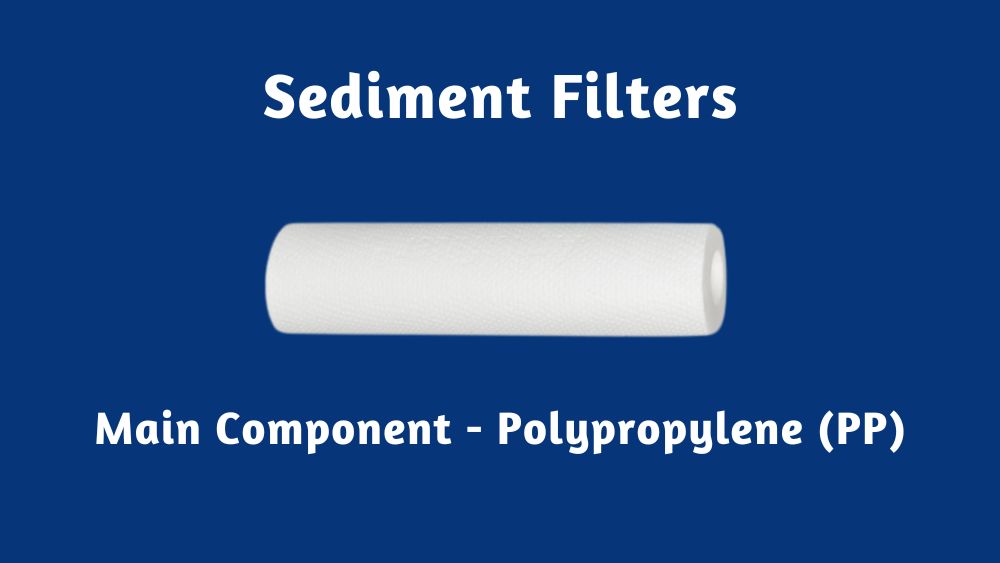
1st Stage – Sediment Filter
Sediment or Polypropylene (PP) filters are a type of porous filter made from thermoplastics. It is generally used as the first stage of RO Water Purifier. This stage removes mainly insoluble particles (soil, sand, silt, organic waste, etc.) from water.
The efficiency of the sediment filter depends on the fineness of its pores. A sediment filter with more refined pores can trap more impurities, so the sediment filter’s value is determined based on the pore shape. Generally, a smaller pore sediment filter is higher in weight.
5″, 6″, 8″, and 10″ lengths of sediment filters are available in the market for home use. In addition, sediment filters on the market have pore sizes ranging from 0.45, 1, 5, and 10 microns and weights ranging from 70, 80, 100, 120, and 150 grams. Among these, a 10″ extended sediment filter with 0.45-micron pores of 150 gm weight is the best in the market for home use.
A good quality sediment filter increases the service life of the RO Membrane of the RO water purifier. In addition, as RO Membrane is more expensive, the cost is also saved with a good quality sediment filter.
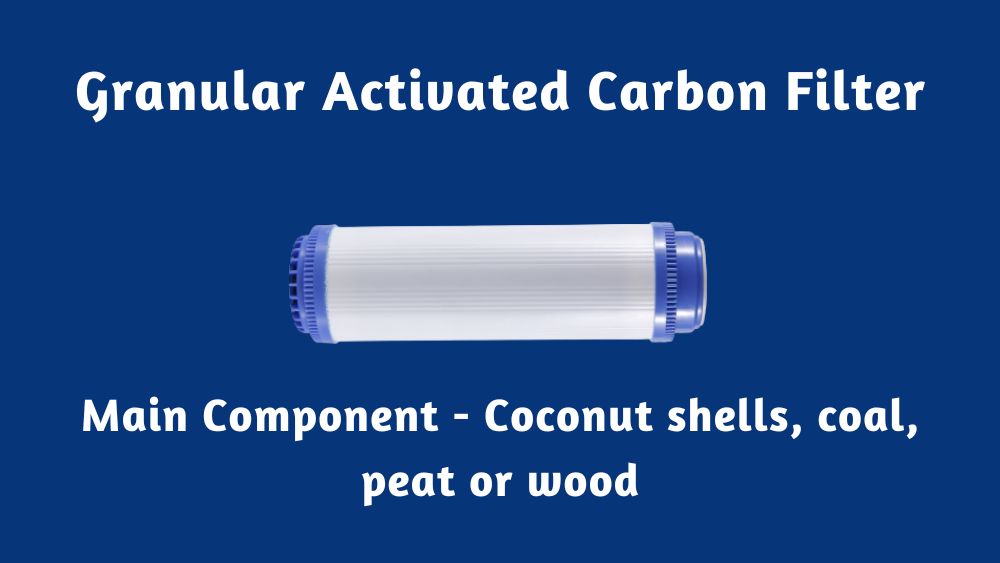
2nd Stage – Granular Activated Carbon Filter
Activated carbon is prepared by heating coconut shells or coal without oxygen.
Iodine number is a measure of the effectiveness of activated carbon. The number of milligrams of iodine that can be absorbed by 1 gram of carbon is called the iodine number of that carbon. Purity, absorption capacity, effective range, fineness of pores, etc., are collectively expressed as iodine numbers.
Granular Activated Carbon (GAC) is granular carbon. Gaseous elements and odors of water are removed through this stage. Granular Activated Carbon (GAC) with different iodine numbers is available in the market. For example Iodine – 300, Iodine – 800, Iodine – 1100, Iodine – 1200 etc are available.
High-quality activated carbon is Iodine – 1100 and Iodine – 1200
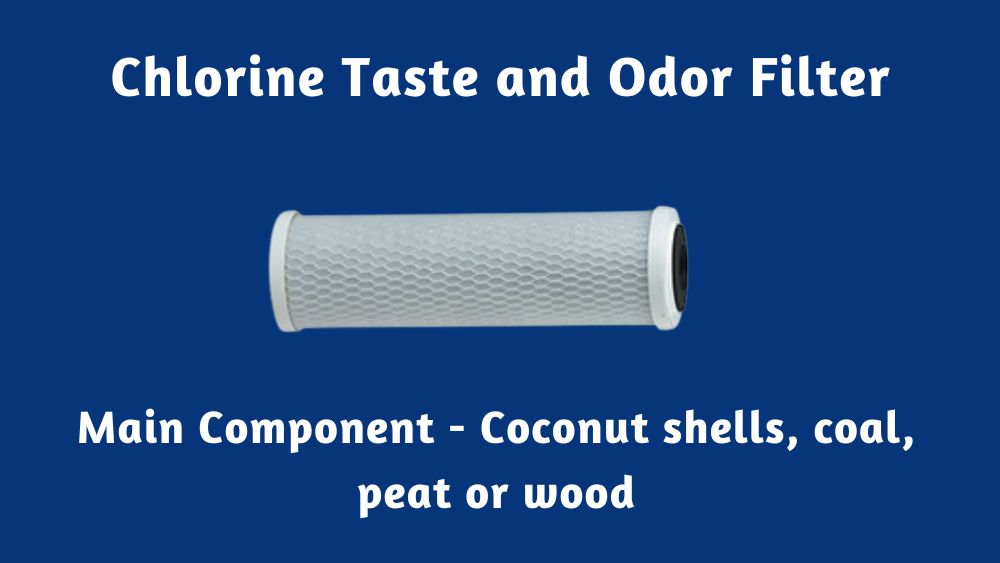
3rd Stage – Chlorine Taste and Odor Filter
Chlorine Taste and Odor (CTO) is a porous screen of activated carbon. Activated carbon is prepared by heating coconut shells or coal without oxygen.
Iodine number is a measure of the effectiveness of activated carbon. The number of milligrams of iodine that can be absorbed by 1 gram of carbon is called the iodine number of that carbon. Purity, absorption capacity, effective range, fineness of pores, etc., are expressed together with iodine number. Negative ions and odors in the water are removed through this stage.
CTO with different iodine numbers is available in the market. For example Iodine – 300, Iodine – 800, Iodine – 1100, Iodine – 1200. High-quality CTOs are Iodine – 1100 and Iodine – 1200.
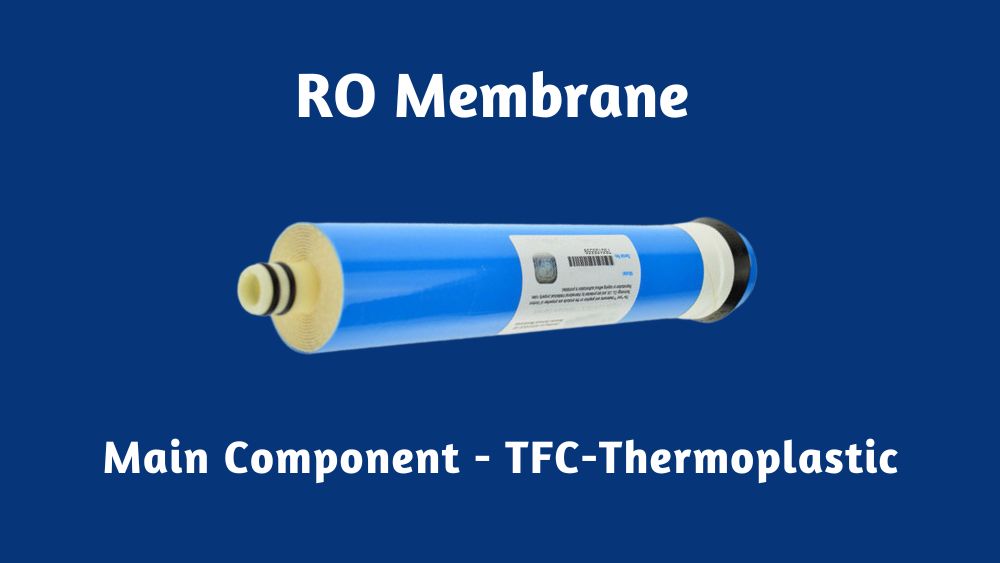
4th Stage – RO Membrane
The Reverse Osmosis (RO) Membrane is a semi-permeable membrane with tiny pores, which is the main component of RO water purifiers. The pore size of decent quality RO membrane is 0.0001 micron. The water flows through the screen by applying intense pressure on the RO membrane with the help of a booster pump. Since the pore size of the screen is 0.0001 micron, all substances and ions larger than the pore size are trapped.
Research has shown that a suitable RO membrane traps all heavy substances and 97-98% of ions; Only 2-3% of covalent ions (sodium and potassium) exist in water. However, potassium and sodium are helpful for the human body.
The efficiency of the RO water purifier depends on the decent quality (0.0001-micron pore size) RO membrane. The better the quality of the RO membrane of the RO water purifier, the more efficient the RO water purifier is.
The booster pump and RO membrane capacity of any RO water purifier should be equal. Because if the capacity of the booster pump is greater than the capacity of the RO membrane, the dissolved ions can pass through the membrane as a result of excess pressure. Similarly, if the capacity of the booster pump is less than the capacity of the RO membrane due to low pressure, in that case, sufficient water will not be available through the membrane as per the demand.
For this reason, NSF, ANSI, and EPA certified by ISO 9001: 2008, RO Filtration technology does not support customization.
The amount of water that will filter through the RO water purifier within the specified time depends on the capacity of the RO membrane. So RO water purifier with high capacity RO membrane and booster pump with equal capacity is more effective.
There are different capacities and brands of RO membrane in the market. For domestic use, there are 50 GPD, 75 GPD, 100 GPD, etc.
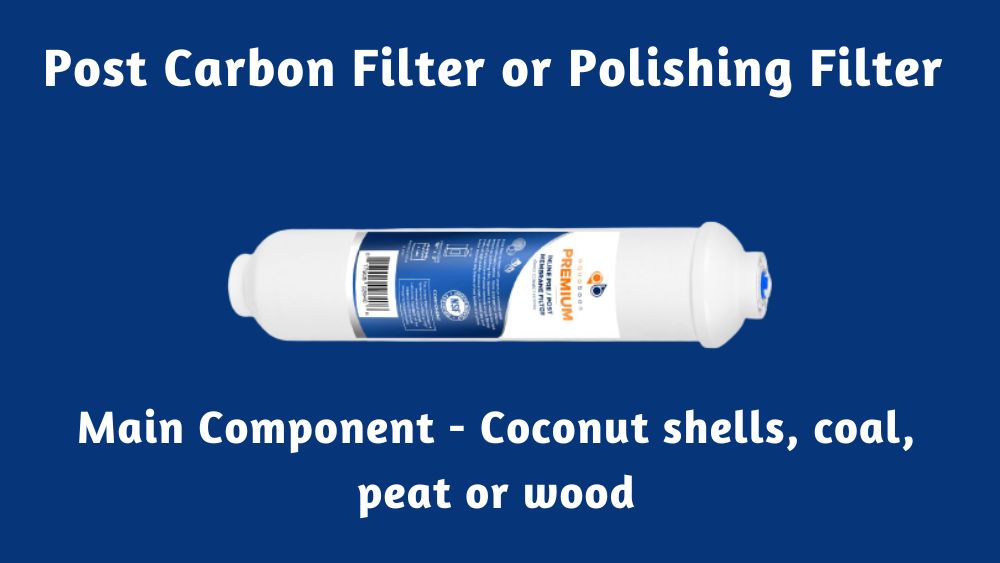
5th Stage – Post Carbon Filter or Polishing Filter
The post-carbon filter is also prepared by heating coconut shells or coal without oxygen. It is an activated carbon as well.
Iodine number is a measure of the effectiveness of activated carbon. The number of milligrams of Iodine (negative ion) absorbed by 1 gram of carbon is called the iodine number of that carbon. Purity, absorption capacity, effective range, fineness of pores, etc., are collectively expressed as iodine numbers.
The post-carbon filter (known as the T-33 filter) is made of activated carbon powder. Through this stage, water taste is increased, and clarity is protected.
The post-carbon filter with different iodine numbers is available in the market. The best post-carbon filter is Iodine – 1100 or 1200.
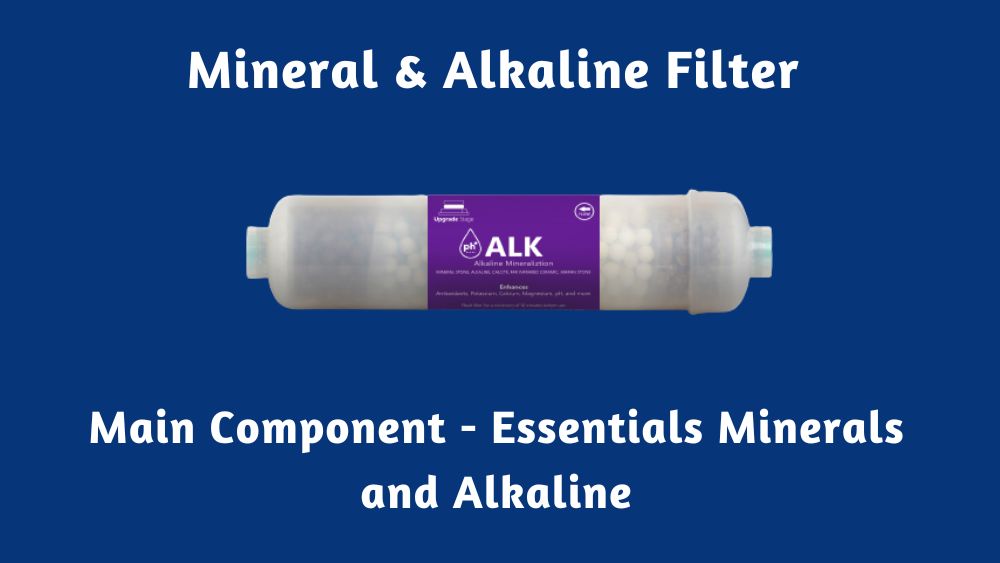
6th Stage – Mineral & Alkaline Filter
Minerals are substances and ions dissolved in water. Generally, drinking water contains beneficial minerals along with some harmful minerals such as arsenic, lead, phosphate, cadmium, chromium, chlorine, selenium, silver, iron, ferrocyanide, etc.
In Reverse Osmosis (RO) method, all the harmful substances and ions in the water are removed. However, a small number of beneficial substances and ions remain. Mineral and Alkaline Filters can be used to maintain the mineral balance of drinking water and increase the PH value.
Mineral and Alkaline filters are available in the market. Following the polishing, the mineral and alkaline filter is added.
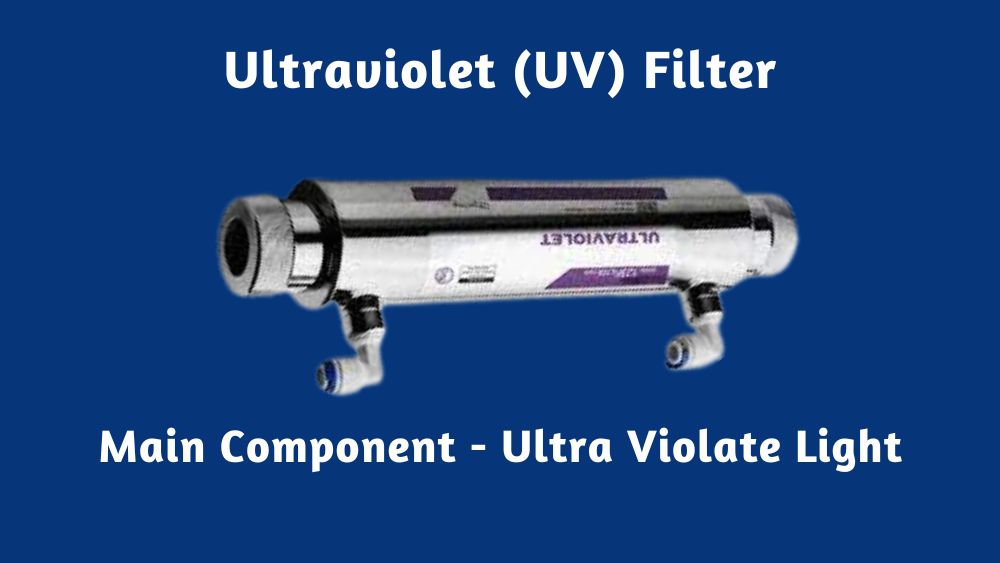
7th Stage – Ultraviolet (UV)
The UV filter is a tube chamber of an RO water purifier. This filter is used to destroy organisms present in water by emitting ultraviolet rays.
Ultra Violate rays are emitted into the water through the Ultra Violate Lamp with the help of electric power inside the tube chamber. Organisms present under the influence of this ray are destroyed immediately.
If a good quality RO membrane with 0.0001-micron pores is used, all types of viruses, bacteria, and harmful heavy substances are removed from the water. However, after the RO Membrane, the polishing filter or mineral filter can also contain bacteria. Therefore, UV light destroys these bacteria and provides safe water.
A good quality RO membrane and UV lamp make the water safe and pure. However, this filter is effective only in the case of transparent water.
There are different brands of UV filters in the market with various capacities. Therefore, before buying an RO Water Purifier, check if it has a good quality UV filter of 11 watts.
Final Words
The number of stages in a reverse osmosis system varies from four to seven. We hope this article will give you a better understanding of reverse osmosis filtration stages. Furthermore, you can choose what to use based on your preferences.

Hasan Al Sarker is a Reverse Osmosis Specialist. He has worked for many years to ensure safe drinking water for all. His research paper has been published in several journals, including Issue, Medium, and Slideshare. He is recognized as a water doctor among specialists though he did not attend medical college.
Besides working as a researcher of reverse osmosis technology, he is also very fancy with the kitchen and cooking. His guides are reading thousands of people every day. As a head of content, he is responsible for all the published articles at RO System Reviews.

